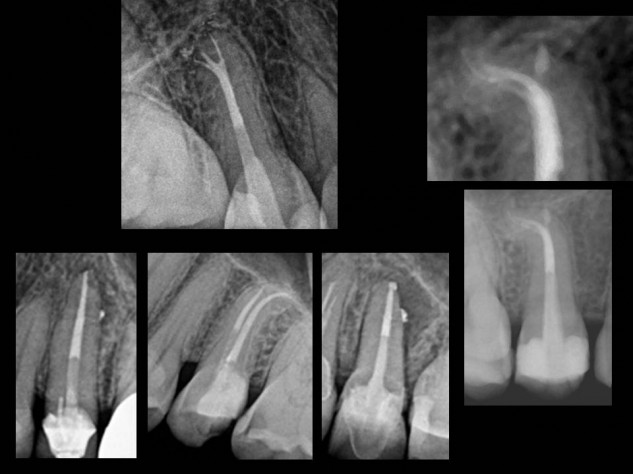Although many text books will describe premolars as having one canal, anybody who practices endodontics will tell you that this is almost never the case. In fact, premolars can often be more difficult to treat than molars due to their anatomic variability and often skinny root and crown forms.
Maxillary second premolar root canal casts from Hess’ classic 1921 study:

Below are cases completed by Dr. Boehne demonstrating considerable variability in premolar anatomy. Note that the portals of exit in these cases range from one to eight. The number of canals are often variable within the same root as canals split and merge and re-split; note the 1:2:1:2 system in the upper right case. Root lengths and curvatures may differ vastly in the same tooth. Premolars commonly have apical bifurcations and even trifurcations and deltas. Contemporary endodontic techniques, and a lot of care, allow for the successful treatment of this challenging anatomy without the need for subsequent apical surgery.

The case below demonstrates a Root Canal Treatment that failed because the apical anatomy was not treated by the original treating dentist. Good osseous healing is evident at 10 months, after the apical bifurcation was addressed.